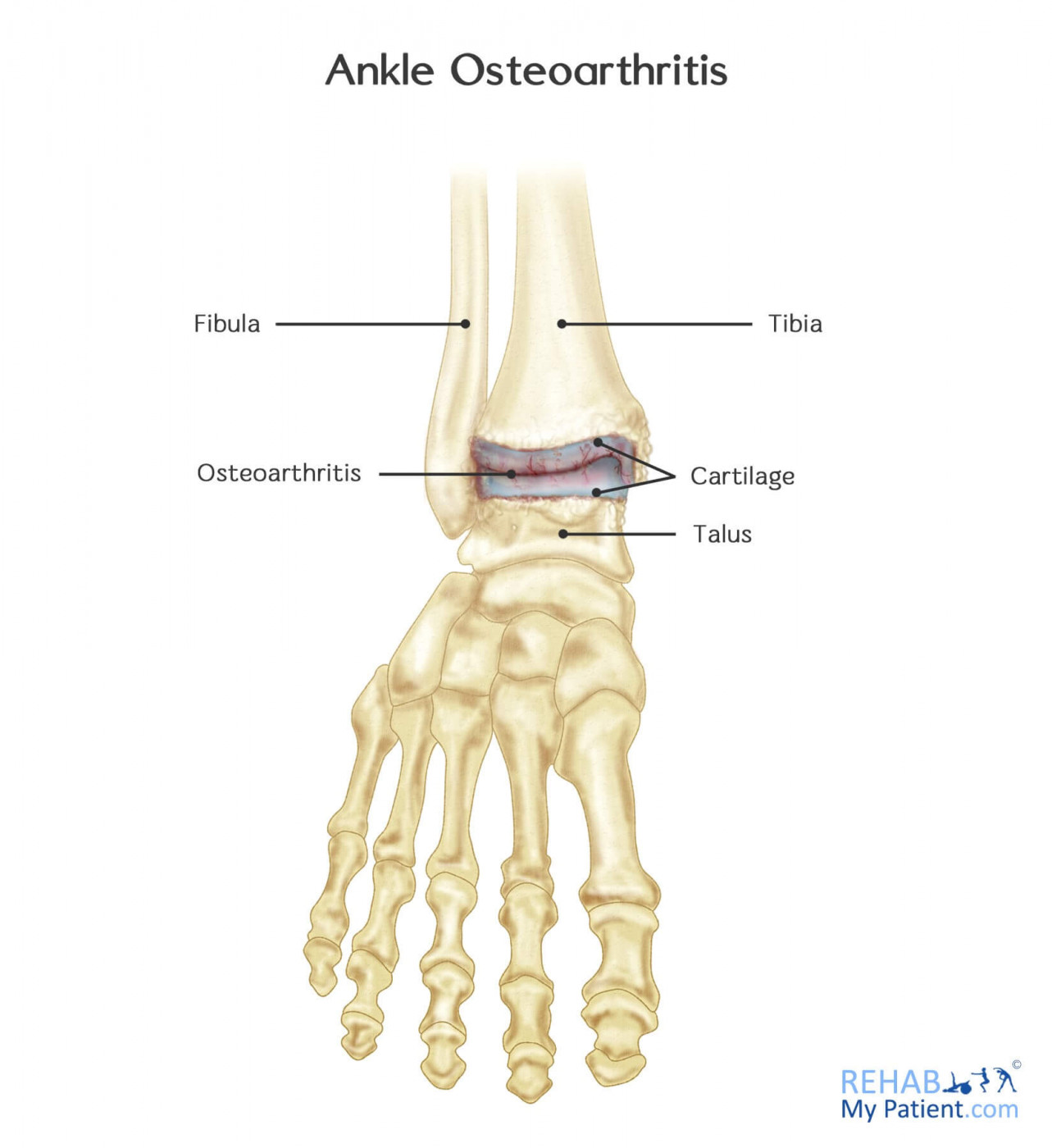
Ankle osteoarthritis is a condition that develops over time due to wear and tear on the ankle joint or develops because of multiple ankle related injuries. Regardless of what causes the problem, it can become a painful condition in which you'll want to get treated immediately. In the picture below, you'll see what ankle osteoarthritis looks like and the damage it can do.
Ankle Osteoarthritis Anatomy
Osteoarthritis, which is known as wear and tear arthritis, is a common problem for a number of people once they reach a certain age. Over the years, the smooth, gliding surface that covers the ends of the bones ends up becoming frayed and worn. In the end, inflammation, pain and swelling occurs in the joint. The condition will progress slowly, while the stiffness and pain worsens over the course of time.
28 bones and more than 30 joints make up the foot. Ligaments work to keep all of the joints and bones in place. If the condition develops in one or more of the joints, walking and balance can be affected.

How to treat ankle osteoarthritis:
Regardless of whether or not your ankle osteoarthritis was caused by multiple injuries to your ankle or it just seemed to develop naturally (for no reason whatsoever), it can be treated in the same ways. If you haven't been to a doctor yet and been diagnosed with ankle osteoarthritis then one of the most common symptoms of the condition is pain and stiffness in the ankle area. Not only will you have difficulty moving your ankle in ways that it normally would but you will start to experience pain and even slight swelling. Fortunately, there are many different treatment options available to you that don't always require surgery
- Nonsurgical Treatment
Depending on the type of arthritis, severity and location, many different forms of treatment are available from which you can choose. Common nonsurgical options are:
- Anti-inflammatory medications and pain relievers to help minimize the amount of swelling in the joint
- Shoe inserts, such as arch supports or pads
- Custom-made shoes, such as a stiff-soled shoe that has a rocker bottom
- Ankle-foot orthosis
- Cane or a walking stick to provide you with stability and help alleviate some of the pressure on the injured site
- Physical therapy or Podiatry can assess the problems in your foot to reduce pain and inflammation of your ankle, and strengthening exercises to help reduce inflammation and strengthen the joints and muscles in the foot
- Nutritional supplements and weight control help make sure your body is healthy and getting all of the proper nutrients it needs
- Steroid (cortisone) injections into the injured joint will help to alleviate some of the pain felt by the patient
- Surgery
If the arthritis doesn’t respond to other treatment alternatives, surgical treatment might be needed. Depending on the type of arthritis present, the location of the arthritis and the impact the disease is having on the joints, the surgery is going to vary accordingly. Surgery that is performed for arthritis of the ankle and the foot include arthroscopic debridement, arthroplasty and arthrodesis. The basic concept is to go into the ankle using keyhole surgery and tidy it up.
Tips:
- If you notice any swelling of the foot and ankle, you need to have it examined by a medical professional for an accurate diagnosis.
- When stiffness and reduced mobility occur, you might be dealing with arthritis in the joints causing the restricted movement.
- Difficulty walking because of pain, swelling or stiffness is not normal and should be looked at to determine the cause.
- If the pain worsens with running or walking, you need to cease doing the activity and have the joint looked at.
- Footwear will be examined to determine if changes need to made in what you are wearing.
- Recovery following ankle surgery can take months, so be realistic with your rehabilitation and work with a therapist right to the end of your recovery.
Sign Up
Sign up for your free trial now!
Get started with Rehab My Patient today and revolutionize your exercise prescription process for effective rehabilitation.
Start Your 14-Day Free Trial